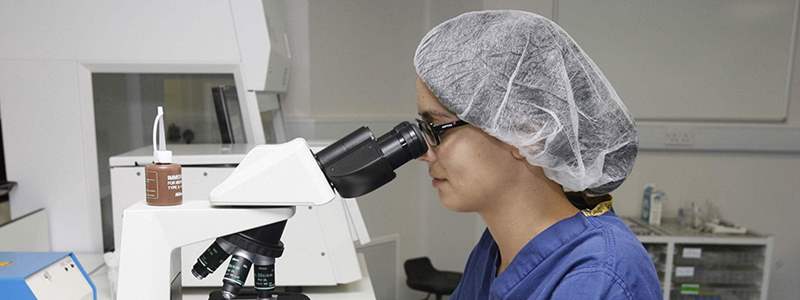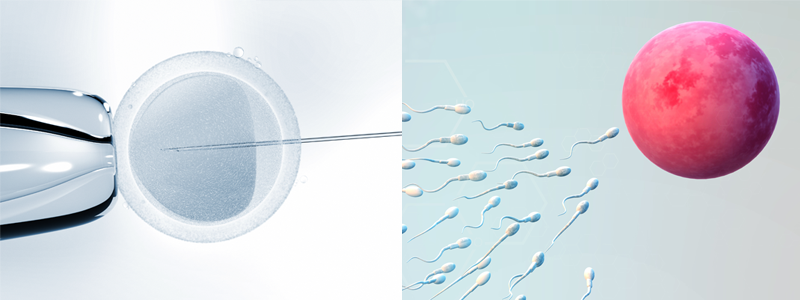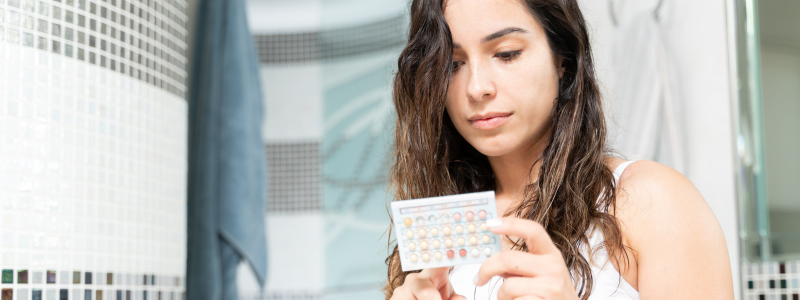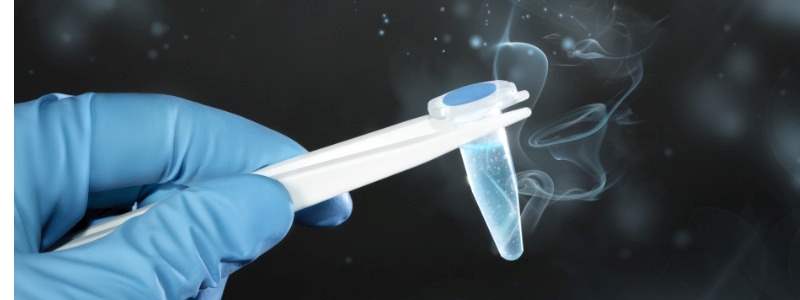Assisted Reproductive technology (ART) is the umbrella term given to describe a number of different treatments that can be performed to help achieve pregnancy. There is no single definition of Assisted Reproductive Technology, it is usually illustrated in contrast to sexual intercourse as the method of reproduction. Hence, it covers a wide range of different fertility treatments.
There is a long history of Doctors trying to provide ART to help couples start a family. John Hunter, the famous Scottish surgeon, carried out the first documented artificial insemination in the 1770s. Since then, there have been many new techniques introduced and new advances have brought better chances of success.
At CREATE Fertility, we perform a variety of treatments which are regarded as ART, including IUI, IVF, IVM, ICSI and Vitrification. Here we go through an outline of each of these fertility treatments:
1. IUI – Intra-Uterine Insemination
IUI is one of the simplest forms of Assisted Reproductive Technology. It involves collection of the sperm, preparing the sperm in the lab and then inserting the prepared sperm into the uterus (womb) of the woman close to the time of ovulation. Before this takes place tests of tubal patency will have to be performed. A cycle of IUI can be undertaken with or without fertility drugs for the woman, depending on what is medically recommended. The success rate is generally lower compared with other forms of ART, and so it is usually only suitable for select couples and those without fertility problems, such as single women and same-sex couples.
2. IVF – In Vitro Fertilisation
IVF is probably the best known form of ART. In essence, it is the collection of sperm from the male and eggs from the woman, which are then placed together in a petri dish in the laboratory. The embryologists then observe if fertilization takes place and following this if the embryo undergoes cell division (cleavage). Good quality embryos are inserted back into the uterus of the woman at any time from day 2 to day 5.
Contrary to popular conception, there are in fact several different ways of doing IVF, which differ depending on the amount of stimulation that is given during an IVF cycle.
The first ever IVF baby, Louise Brown, was born following Natural Cycle IVF. This means that her mother was given no drugs during fertility treatment. Our Medical Director, Prof Nargund, is one of the recent pioneers of Natural Cycle IVF and has found ways to make it more successful in select groups of patients.
Then, there is Conventional IVF, which is performed by most IVF clinics. The ovaries are usually suppressed (downregulated) for about 10 days before the woman’s natural menstrual cycle and this is followed by high dosages of fertility drugs in order to stimulate the growth of multiple follicles and embryos and embryos. The theory behind this treatment is to increase quantity and thereby increase success.
Finally, there is Mild IVF, which is the latest stage in the improvement of IVF. Rather than shutting down the woman’s menstrual cycle, Mild IVF is performed in a woman’s natural cycle. Fewer fertility drugs are given with the aim to achieve a mild response. The success rates of Mild IVF are excellent and there are fewer risks, and fewer side effects. CREATE Fertility has pioneered the usage of Mild IVF in the UK.
3. IVM – In Vitro Maturation
IVM is one of the most exciting forms of ART. The inventor of IVF, Sir Robert Edwards, used to describe IVM as the future of ART. CREATE Fertility are one of the few clinics in Europe to perform this Assisted Reproduction Technology. IVM is the process by which we collect immature eggs from a woman’s ovaries during a natural (unstimulated) cycle. We then mature these eggs in the laboratory and when they have reached sufficient maturity, we perform ICSI to achieve fertilization. Hence, without giving any fertility drugs, we are able to create multiple embryos. Our Scientific Director, Professor Chian, was the worldwide pioneer of IVM and he introduced IVM to our services.
4. Vitrification – ‘The Fast-freezing Method’
Vitrification is the method we use at CREATE to freeze eggs, sperm and embryos,. Previously, the freezing of gametes and embryos was a risky process with an uncertain thawing success rate. However, after the invention of Vitrification, all of that has changed and our thawing success rate at CREATE for embryos is over 95%. Essentially, in this ART, the cells are frozen much more quickly than they were in the old methods, and thereby avoid the creation of damaging ice-crystals. Our Scientific Director, Professor Chian, is one of the pioneers of Vitrification and introduced it to our services.
5. ICSI – Intra-Cytoplasmic Sperm Injection
If you’ve ever watched the news item about IVF, chances are you were actually looking at ICSI! ICSI is the ART, which is used to achieve normal fertilisation where there is a male factor problem. It involves an embryologist selecting a single sperm, removing the tail and then injecting it into the egg. However, it is an invasive procedure and at CREATE Fertility, we only use ICSI if it is absolutely necessary. In conventional IVF, natural selection chooses the best sperm to fertilise the egg. In ICSI, we are reliant on human choice.
We hope this summary of what is involved with ART was helpful and if you have any questions, feel free to get in touch with us!







